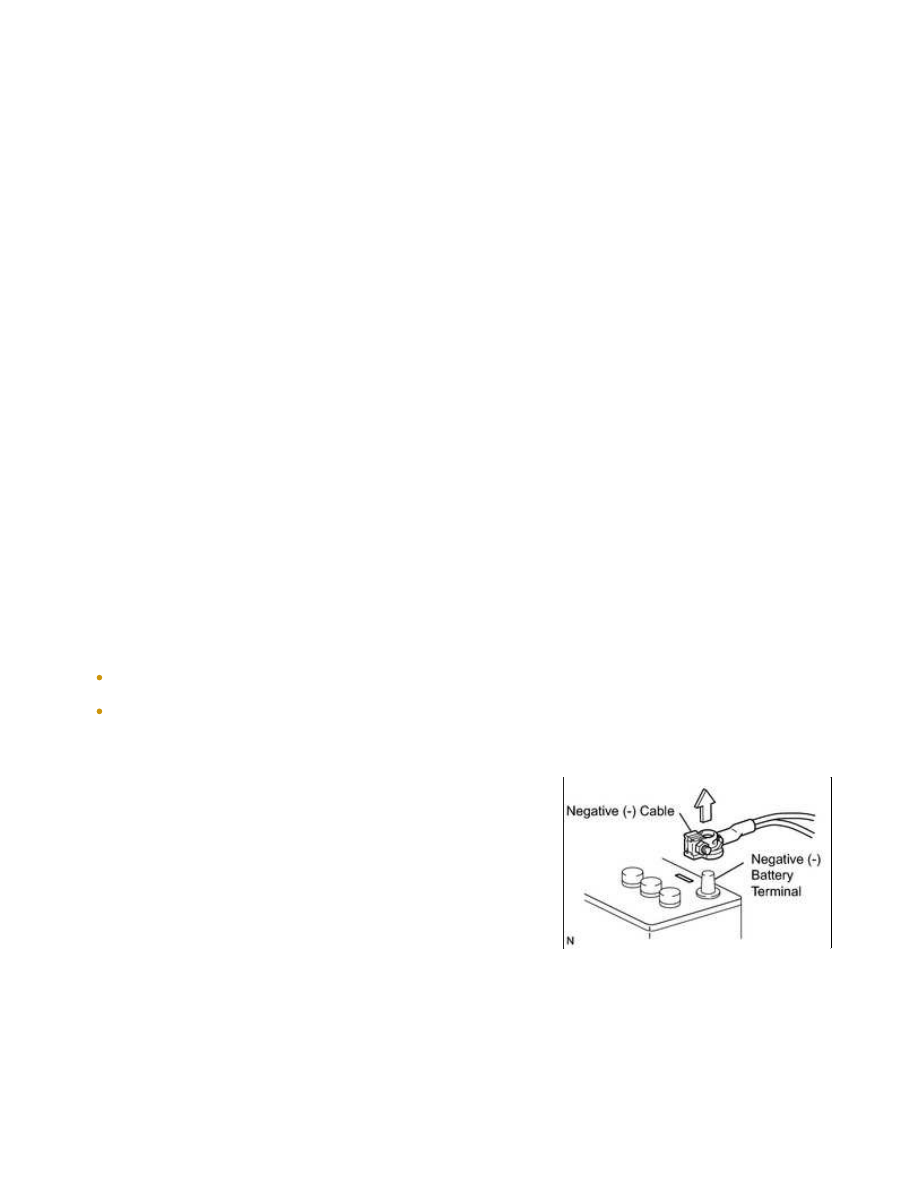Toyota Tundra (2015 year). Manual - part 10

(4) When using electric welding anywhere on the vehicle, disconnect the center airbag sensor connectors
(6) As the seat outer belt is hot after the pretensioner is activated, allow some time for it to cool down
sufficiently before disposal. Never apply water to try to cool down the seat outer belt.
(7) Grease, detergents, oil or water should not be applied to the seat outer belt.
(d) AIRBAG SENSOR ASSEMBLY
(1) Never reuse an airbag sensor assembly that has been involved in a collision where the SRS has
deployed.
(2) The connectors to the airbag sensor assembly should be connected or disconnected with the sensor
placed on the floor. If the connectors are connected or disconnected while the airbag sensor assembly
is not placed on the floor, the SRS may activate.
(3) Work must be started at least 90 seconds after the ignition switch is turned OFF and the cable is
(e) WIRE HARNESS AND CONNECTOR
(1) The SRS wire harness is integrated with the instrument panel wire harness assembly. All the
connectors in the system are yellow. If the SRS wire harness becomes disconnected or the connector
becomes broken, repair or replace it.
3. ELECTRONIC CONTROL
(a) REMOVAL AND INSTALLATION OF BATTERY TERMINAL
NOTICE:
Certain systems need to be initialized after disconnecting and
reconnecting the cable from the negative (-) battery terminal.
w/ Navigation System (for SD):
After the ignition switch is turned off, the navigation
the negative (-) battery terminal to prevent component and
wire damage caused by accidental short circuits.
(2) When disconnecting the cable, turn the ignition switch OFF
and headlight dimmer switch OFF and loosen the cable nut
completely. Perform these operations without twisting or
prying the cable. Then disconnect the cable.
(3) Clock settings, radio settings, audio system memory, DTCs
and other data are erased when the cable is disconnected
from the negative (-) battery terminal. Write down any
necessary data before disconnecting the cable.
(4) Certain systems need to be initialized after disconnecting and